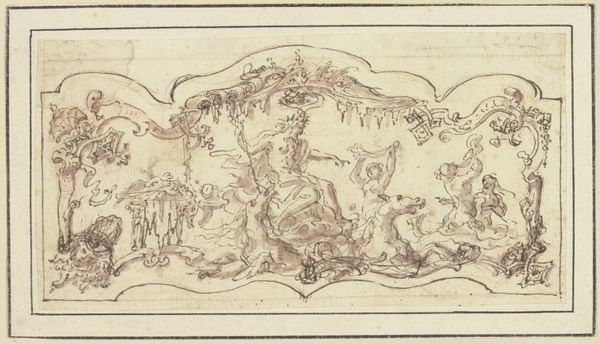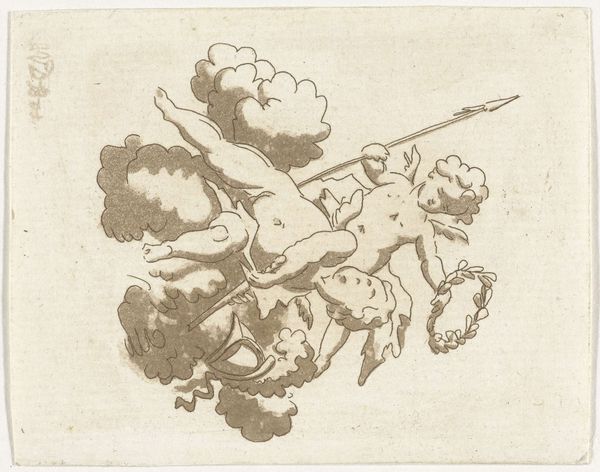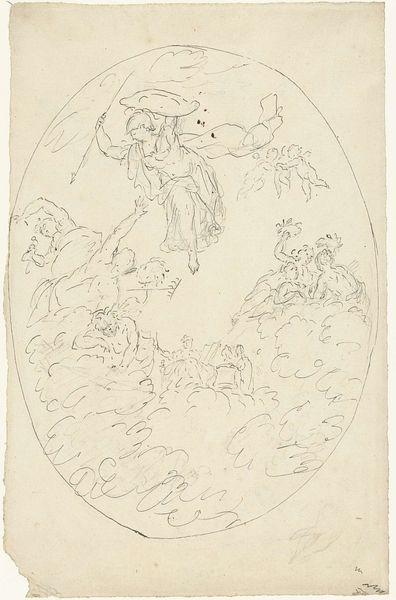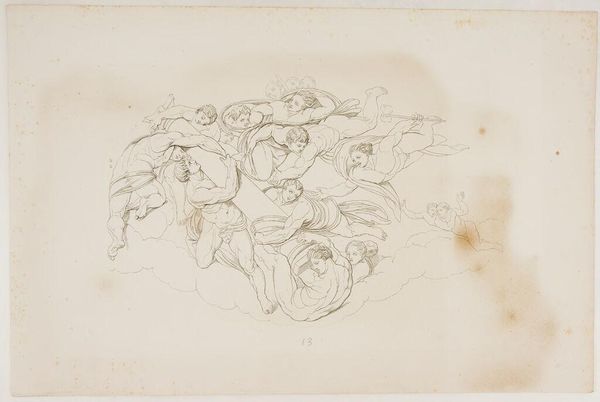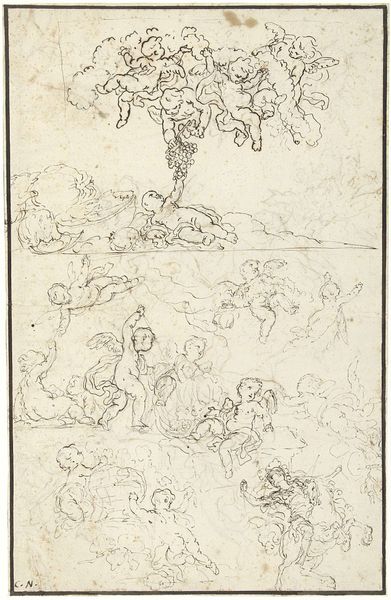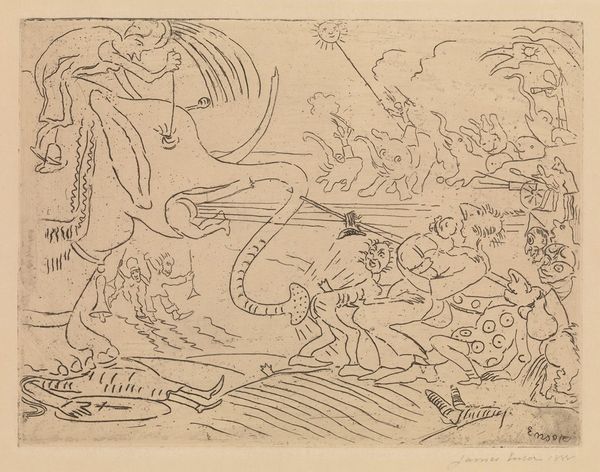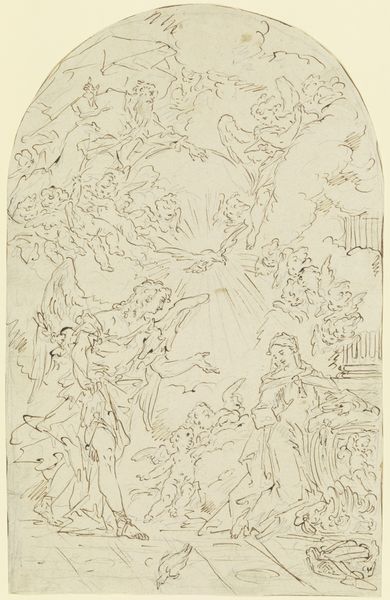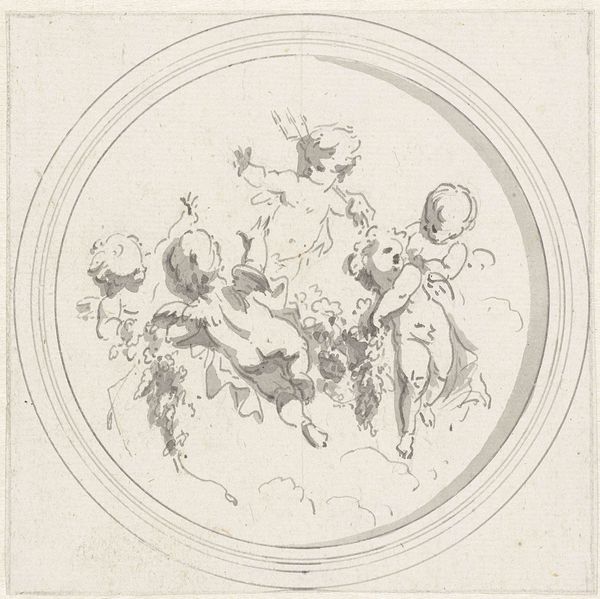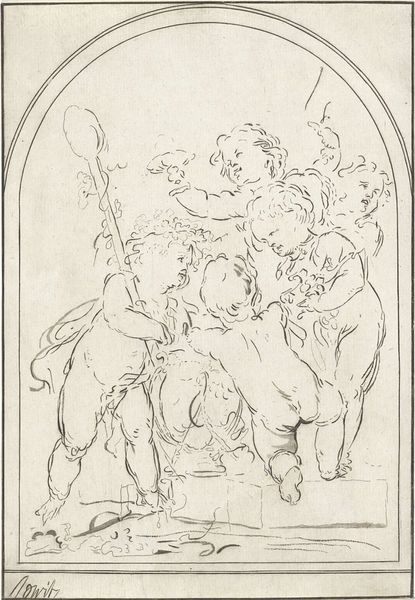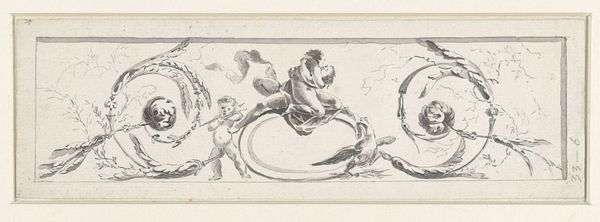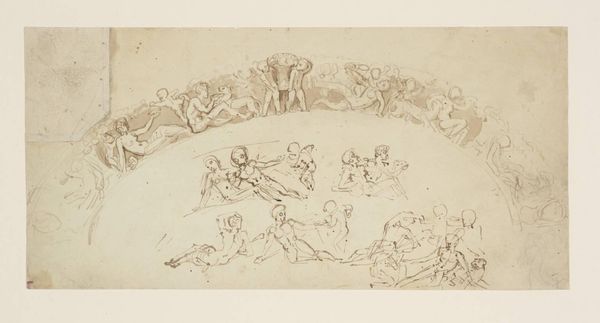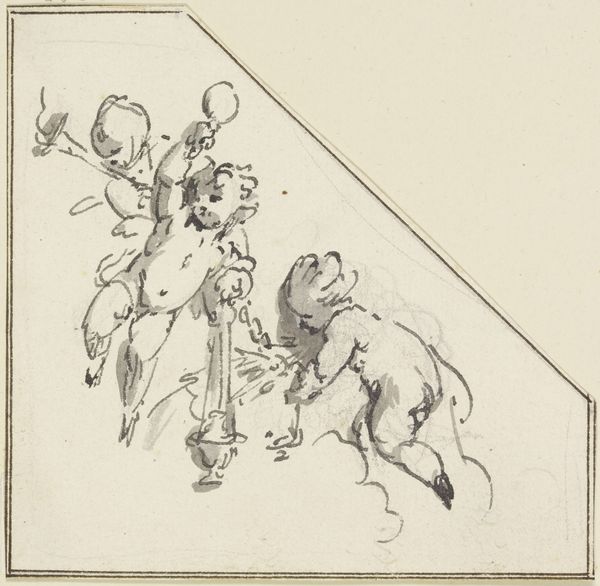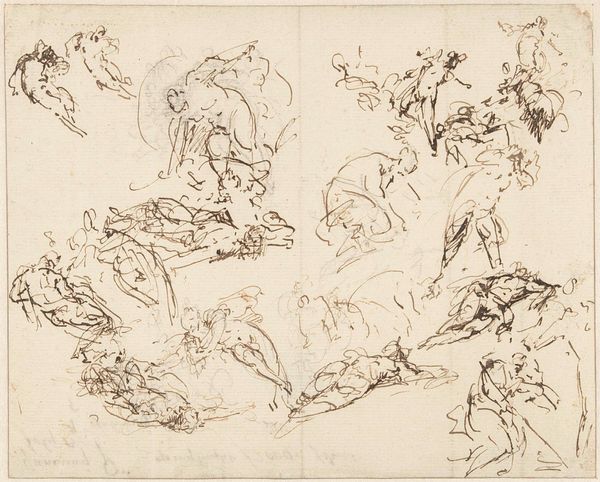
Dimensions: height 158 mm, width 128 mm
Copyright: Rijks Museum: Open Domain
This drawing by Anthonie van den Bos, now at the Rijksmuseum, features five putti playfully intertwined with blossoming branches. These chubby, winged infants, symbols of divine love and messengers from above, are descendants of the ancient Roman Cupid. Observe how these figures, so prevalent in Renaissance and Baroque art, are not confined to sacred spaces, but frolic amidst earthly flora. The blossoming branches, signs of renewal and vitality, also echo back to classical motifs of fertility and abundance. Consider how the putto figure has evolved. From its origins in pagan art to its adoption by Christianity, the putto’s image has undergone continuous metamorphosis, reflecting changing cultural values and spiritual beliefs. Each era imprints its own desires and ideals upon this enduring symbol. The emotional resonance of these figures is undeniable, evoking a sense of innocence and joy that speaks to our deepest longings for harmony and connection. It is through symbols like these that we are reminded of the cyclical nature of history, where the past continually resurfaces, transformed, and renewed in the present.
Comments
No comments
Be the first to comment and join the conversation on the ultimate creative platform.
